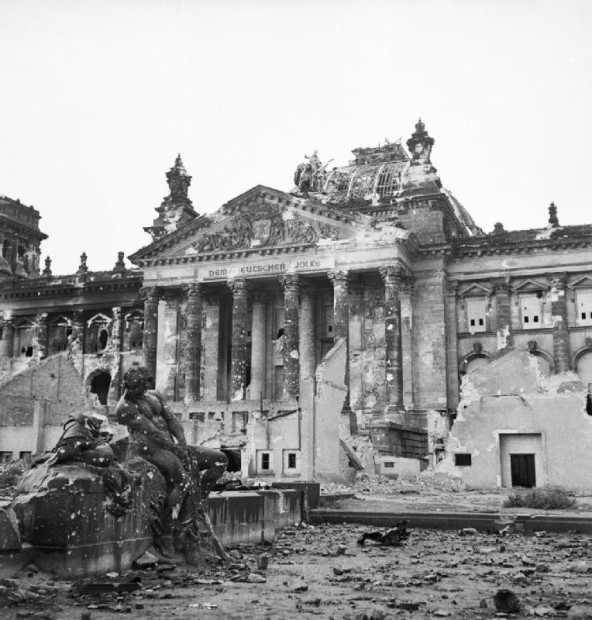
The Reichstag in Berlin, pictured in June 1945, a few weeks after Berlin fell to the Soviet Red Army. (Source: Imperial War Museum)
For Soviet leader Joseph Stalin’s commanders, the grand prize was the Reichstag, Germany’s parliament building. Stalin had pitted his generals against one another, daring them to be the first there. The Russians wanted to fly their flag over the dome of the Reichstag in time for May Day, the international celebration of socialism. And they achieved their goal. On May 1, 1945, the red hammer and sickle flag flew over Germany’s fallen capital….
The Americans did not take part in the land battle and wouldn’t reach Berlin for several weeks after the city fell. The British and American role in attacking Berlin had been the large-scale air campaign meant to bomb Germany into submission. In postwar American history books, the contribution of the Soviet Union in fighting Hitler—along with the astonishing toll the war had taken on Russia— was largely brushed aside as the tensions between the American and Western European countries on the one side and the Soviet Union and its bloc of communist nations grew increasingly fraught during the Cold War.
Excerpted from “Berlin Stories” in THE HIDDEN HISTORY OF AMERICA AT WAR
The Hidden History of America At War-May 5, 2015 (Hachette Books/Random House Audio)